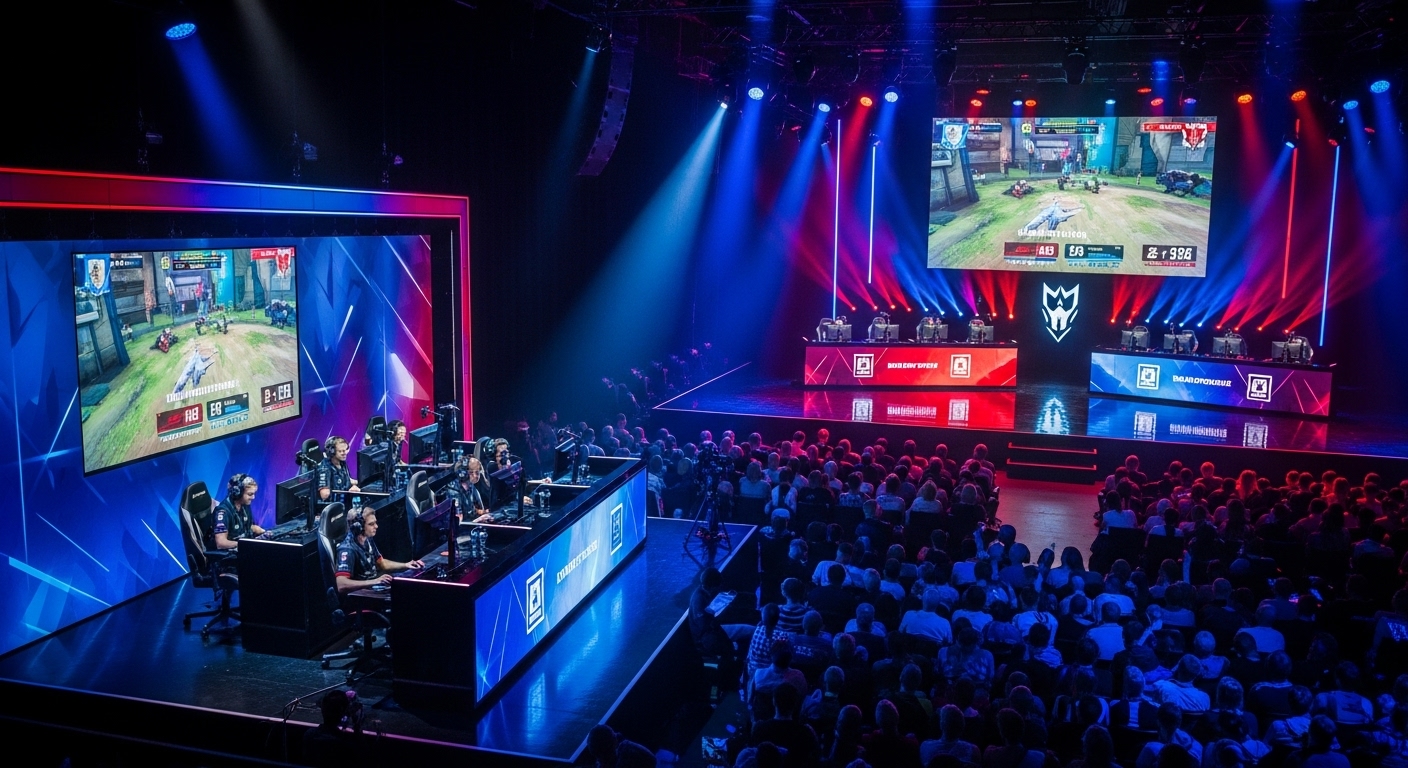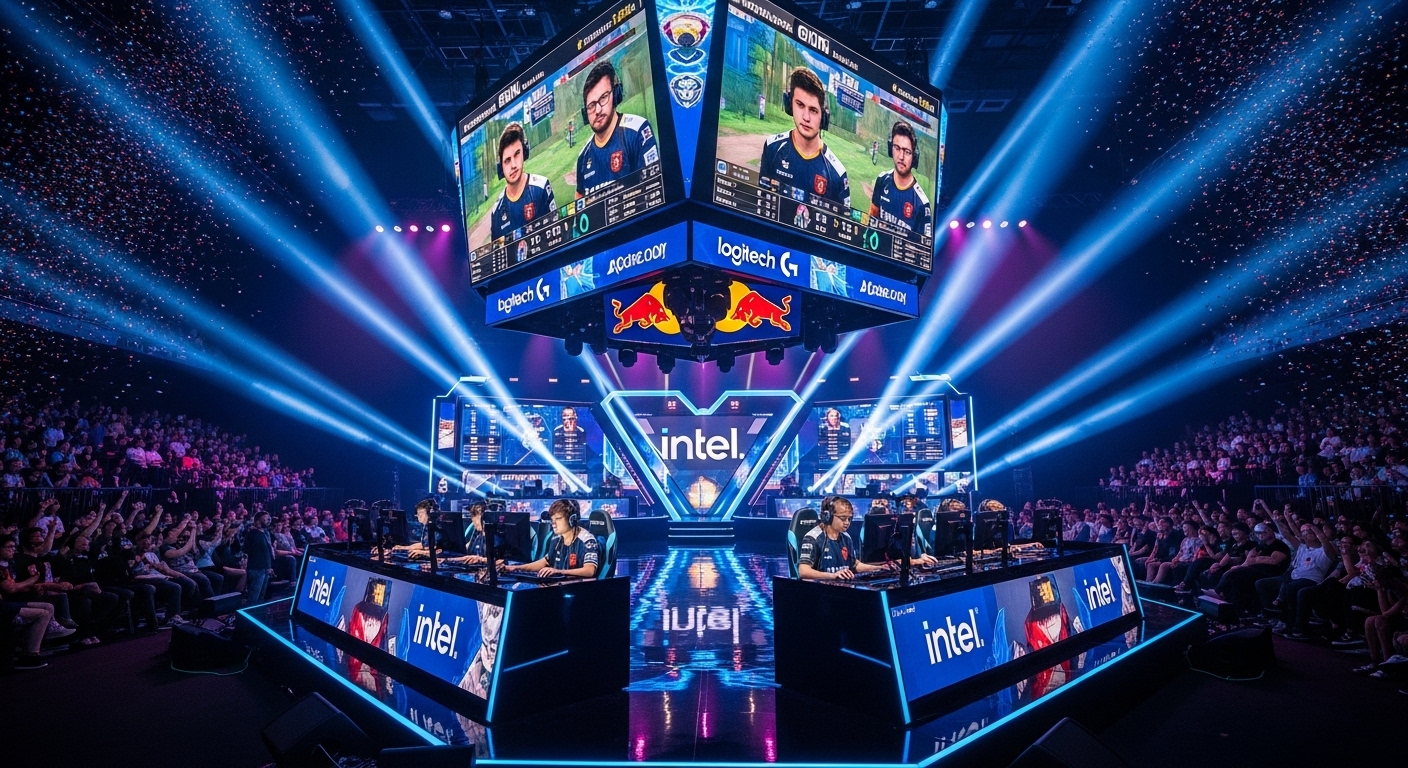Introduction
In just a few decades, the world of competitive gaming — better known today as esports — has evolved from small, local tournaments in college dorms and computer cafés into a billion-dollar global industry. What was once dismissed as a niche pastime has now become a legitimate form of entertainment, competition, and even career. Esports has crossed borders, united cultures, and turned passionate gamers into international celebrities.
Understanding esports requires looking beyond the surface level of video games. It’s a story of innovation, community, technology, and the power of digital culture. The rise of esports reflects how deeply gaming has become embedded in modern society and how entertainment has adapted in the digital age.
The Origins of Esports
The concept of competitive gaming stretches back further than most people think. In 1972, Stanford University hosted what many consider the first video game competition — a “Spacewar!” tournament. The prize? A one-year subscription to Rolling Stone magazine. While modest, it marked the beginning of something that would grow far beyond what anyone imagined.
By the 1980s, video games were entering mainstream entertainment thanks to arcade machines and home consoles. Titles like Pac-Man, Donkey Kong, and Space Invaders introduced the thrill of high scores, fueling friendly competition. Arcades became gathering places where players could test their skills and earn bragging rights, long before online leaderboards existed.
The 1990s brought a turning point. With the rise of the internet and personal computers, multiplayer gaming became possible on a wider scale. Early tournaments like the Nintendo World Championships and games like Doom and Quake set the foundation for organized play. The Quake tournaments in particular introduced professional players such as Dennis “Thresh” Fong, often called the first professional gamer. His 1997 victory, where he famously won a Ferrari, became symbolic of a new era — gaming was no longer just recreation; it could be competition.
The 2000s: The Digital Frontier Expands
The early 2000s marked the true beginning of structured esports as we know it. Games like Counter-Strike, StarCraft, and Warcraft III became competitive staples, and the first dedicated esports leagues began forming. South Korea led this movement with the Korean eSports Association (KeSPA), which helped formalize professional gaming and gain government recognition.
Television networks in South Korea began broadcasting matches, especially for StarCraft: Brood War, creating the first generation of gaming celebrities. Players like BoxeR and NaDa became household names, drawing millions of fans and legitimizing esports as a cultural phenomenon.
In the West, events like the Cyberathlete Professional League (CPL) and Major League Gaming (MLG) gave structure to competitions in games like Halo and Call of Duty. These leagues introduced prize pools, sponsorships, and global tournaments. The internet allowed players from different continents to compete, and streaming platforms began to emerge, setting the stage for what would later become the lifeblood of esports — live online broadcasting.
The 2010s: The Explosion of Esports
If the 2000s laid the foundation, the 2010s were when esports truly exploded into the mainstream. Several key factors contributed to this growth: better internet infrastructure, advanced gaming hardware, and the rise of online streaming platforms like Twitch and YouTube Gaming.
Games such as League of Legends, Dota 2, and Counter-Strike: Global Offensive became synonymous with esports. Each title developed its own professional scene, complete with international tournaments, sponsorship deals, and enormous fanbases.
The League of Legends World Championship became one of the most-watched sporting events in the world, with viewership numbers rivaling traditional sports. Similarly, The International (Dota 2’s annual world championship) became famous for its record-breaking prize pools, often exceeding tens of millions of dollars. These tournaments were not just gaming events — they were global spectacles, complete with live crowds, pyrotechnics, professional commentators, and millions of online viewers.
Esports organizations like Team Liquid, Fnatic, Cloud9, and T1 began to operate like traditional sports franchises, managing players, signing sponsorships, and investing in training facilities. Corporate giants like Coca-Cola, Red Bull, and Intel jumped on board, seeing esports as the next frontier of youth engagement.
The Role of Streaming and Media
One of the most important shifts that propelled esports forward was the democratization of broadcasting. In the early days, watching esports meant attending live events or downloading recorded matches. That changed with the rise of Twitch in 2011. Suddenly, anyone could watch their favorite players and teams live, from anywhere in the world, for free.
Streaming did more than make esports accessible — it made it personal. Fans could interact with players through chat, follow their practice sessions, and feel connected to their journey. This level of interaction created a new kind of fandom, one that was more engaged and loyal than traditional sports audiences.
YouTube Gaming and other platforms soon followed, competing for viewership and creating opportunities for streamers and content creators. The boundary between “professional player” and “entertainer” began to blur. Many esports stars became online influencers, building personal brands that extended far beyond the game itself.
Esports as a Career
What was once considered an unconventional dream is now a viable career path for many. Professional players earn salaries, prize money, and sponsorships, while coaches, analysts, and content creators fill out an entire ecosystem of job roles.
Top players can earn millions through competition and endorsements. Organizations have started offering contracts, benefits, and even housing — known as “gaming houses” — where teams live and train together. These setups mirror traditional sports environments, complete with nutrition plans, exercise routines, and performance coaching.
Beyond players, there are countless career opportunities in esports. Event management, production, broadcasting, journalism, marketing, and data analytics are just a few examples. The industry supports a wide range of professionals who may never pick up a controller but still play a vital role in making esports possible.
Esports in Education
One of the most fascinating developments in recent years has been the introduction of esports into education. High schools and universities around the world now offer esports programs, clubs, and even scholarships.
In the United States, colleges such as the University of California, Irvine, and Boise State have built esports arenas and offer full scholarships for competitive gaming. This academic recognition not only validates esports as a legitimate activity but also provides opportunities for students who may not fit into traditional athletic programs.
Educational institutions have also embraced esports for its transferable skills — teamwork, communication, strategic thinking, and leadership. For many young people, esports is more than just gaming; it’s a path toward personal development and community engagement.
The Globalization of Esports
Esports has become one of the few truly global industries. Unlike traditional sports, which often face geographical and logistical limitations, esports transcends borders. A tournament can feature players from Korea, Europe, North America, and Latin America all competing in real time.
Regions like China have taken the industry to new heights, with government-backed support and massive investments in infrastructure. Chinese esports arenas regularly draw crowds of tens of thousands, and organizations such as Edward Gaming and Invictus Gaming are national icons.
Meanwhile, countries in Southeast Asia, the Middle East, and Africa are rapidly emerging as new esports powerhouses. Improved internet access and mobile gaming have made esports more inclusive than ever before. Games like Mobile Legends and PUBG Mobile have created massive followings in these regions, proving that esports is not confined to PCs or consoles.
The Cultural Impact of Esports
Esports has deeply influenced modern culture. Its presence is felt in fashion, music, advertising, and even film. Major artists perform at esports events, while brands collaborate with gaming teams on clothing lines and merchandise.
In 2019, the League of Legends virtual band K/DA — composed of animated characters voiced by real artists — released a song that topped global charts, illustrating the blend of entertainment, technology, and fandom unique to esports.
Esports has also challenged perceptions of what it means to be an athlete or a fan. It has shown that competition and excellence are not limited to physical sports. The dedication, strategy, and teamwork required in professional gaming rival those of any athletic discipline.
The Economics of Esports
The financial side of esports is as fascinating as the games themselves. According to industry analysts, global esports revenue surpassed the billion-dollar mark before 2020 and continues to grow year after year.
Revenue streams come from sponsorships, advertising, media rights, merchandise, and ticket sales. The diversity of these streams highlights the stability and long-term potential of the industry. While prize pools often make headlines, they are just a small part of the overall economy.
Brands are eager to tap into esports because it reaches a valuable demographic — young, tech-savvy consumers who are less influenced by traditional advertising. For companies, sponsoring a gaming team or tournament offers direct access to millions of engaged fans.
The Challenges Facing Esports
Despite its success, esports faces its share of challenges. Player burnout is a growing concern, as the intense schedule and constant pressure can take a mental and physical toll. Unlike traditional athletes, many professional gamers start their careers in their teens, leading to shorter career spans and limited long-term planning.
Regulation is another issue. Because esports spans multiple countries and game publishers, there is no single governing body. This can create inconsistencies in rules, contracts, and tournament standards. Issues like match-fixing, cheating, and doping have occasionally surfaced, prompting calls for more oversight.
Monetization and sustainability also remain questions for the industry. While top-tier tournaments thrive, smaller leagues and lesser-known titles often struggle to attract stable funding. As the market grows, balancing profitability with fair player treatment and community trust will be crucial.
Esports and Traditional Sports: A Convergence
In recent years, traditional sports organizations have taken notice of esports’ success. Many have entered the space directly, investing in teams or creating their own esports divisions. Football clubs such as Paris Saint-Germain, Manchester City, and FC Barcelona have launched esports rosters. The NBA created the NBA 2K League, bridging virtual basketball with its real-world counterpart.
This crossover highlights how esports and traditional sports can coexist rather than compete. Both appeal to audiences seeking competition, skill, and storytelling. As technology continues to evolve, virtual and physical sports may become even more interconnected, especially with advancements in augmented and virtual reality.
The Future of Esports
The future of esports looks promising, but it will depend on how the industry adapts to new technologies and changing consumer habits. Virtual reality, cloud gaming, and artificial intelligence are likely to play major roles in shaping the next generation of esports.
Mobile gaming will also continue to expand accessibility, especially in developing regions. With 5G connectivity spreading globally, more players than ever can compete at high levels without expensive equipment.
Moreover, as esports continues to integrate with entertainment industries, we can expect more crossovers — movies, music collaborations, and virtual experiences that blur the line between gaming and popular culture.
In education and workforce development, esports could help redefine how we think about teamwork, digital literacy, and performance. For younger generations, growing up in a world where professional gaming is normal may open doors to careers we can’t even imagine today.
Conclusion
Esports is no longer an emerging trend — it’s an established pillar of modern entertainment. Its growth from basement tournaments to sold-out stadiums and global broadcasts is nothing short of extraordinary.
At its heart, esports represents the evolution of competition in the digital era. It’s about people coming together through technology to test their skills, tell stories, and share passion across boundaries. Whether you’re a player, a fan, or simply curious about the culture, esports offers a glimpse into the future of how we play, connect, and compete.
The industry still has hurdles to overcome, but its momentum shows no signs of slowing down. With each passing year, the line between gaming and mainstream culture becomes blurrier, and esports stands proudly at that intersection — a symbol of how far we’ve come and where we’re headed next.

